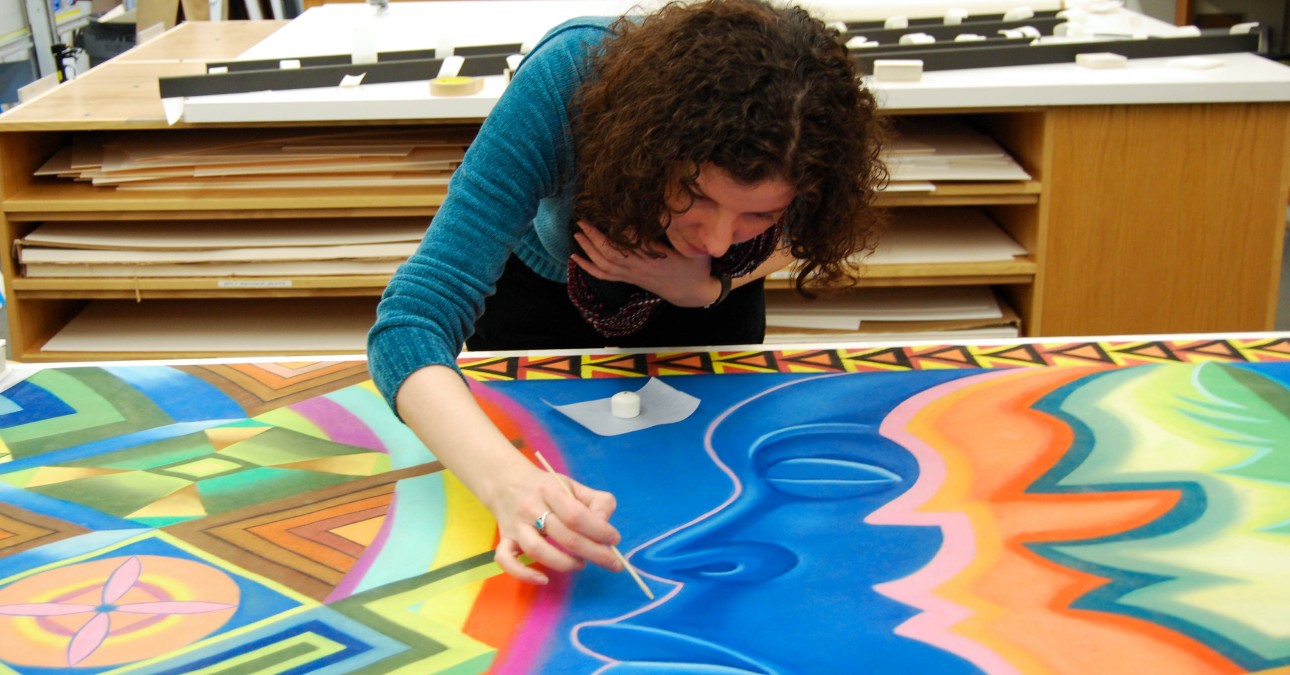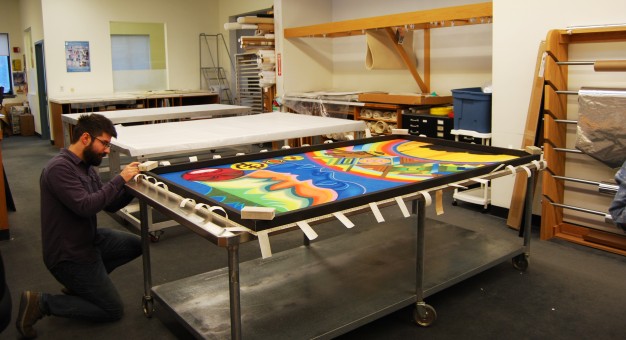
Treatment FOCUS: Amos Ashanti Johnson's Pastels
Treating pastels is always challenging due to the delicate, crumbly nature of the media. They also present handling and transport issues that must be considered during housing. When two large pastels from the University of Delaware Museums came to CCAHA, conservators had to balance improving their aesthetic appearance and overall stability while minimizing risk.
The pastels from the University of Delaware, called Hermes Trigmegistus and African Rainbow, are by the artist Amos Ashanti Johnson. Completed in 1977, the vibrant pieces each measure roughly 4 by 7.5 feet. When they arrived at CCAHA, the works were pressing up against the acrylic glass, or “glazing” of their frames, which had caused the paper to buckle and some of the pastel to stick to the glazing. The pastels also had some mold growth and damaging tape mends.

CCAHA Manager of Housing & Framing Zac Dell’Orto attaching the custom-built spacer to African Rainbow.
CCAHA Senior Paper Conservator & Preservation Consultant Jessica Silverman treated the pastels. She used bamboo skewers tipped with a tacky acrylic adhesive to lift the mold from the works and carefully removed the tape with a heated spatula. Silverman used targeted amounts of moisture to flatten the buckled areas of the artworks.
Housing the pastels required thinking outside of the box—or sealed package. Along with building a customary spacer to separate the artworks from the acrylic glazing, CCAHA Manager of Housing & Framing Zac Dell’Orto also built a special gutter to run along the bottom of the spacer. This gutter will catch any particles of pastel that may come loose, an occasional occurrence with pastels.
